Recent Fire Damage Posts
Protecting Your Home from Fire Hazards and Restoring Your Peace of Mind with SERVPRO of Bountiful
10/23/2023 (Permalink)
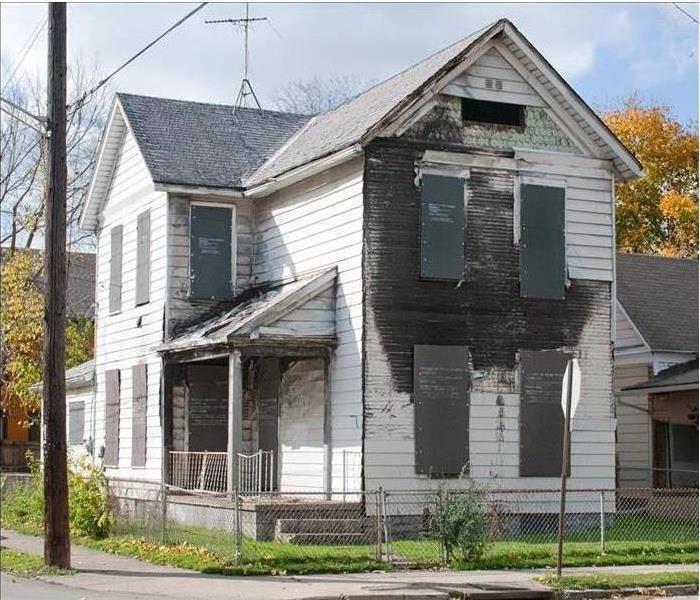 Fire damaged home in Bountiful, Utah.
Fire damaged home in Bountiful, Utah.
The safety and security of our homes are among our top priorities. Fire hazards can pose a significant threat to our cherished abodes, and understanding the leading causes of home fires is the first step in prevention. In this blog post, we'll delve into the primary causes of home fires and explore how SERVPRO of Bountiful can help you restore your home and peace of mind if you ever find yourself facing a fire-related disaster.
Understanding the Leading Causes of Home Fires
Electrical Fires: Electrical fires are one of the most common causes of residential fires. They can be triggered by faulty wiring, overloaded circuits, or malfunctioning electrical appliances. To prevent electrical fires, it's crucial to have your electrical systems inspected regularly and perform necessary maintenance. Flickering lights, charred outlets, or a burning odor are all signs that your electrical system may be at risk. Be vigilant and proactive to avoid these hazards.
Cooking Accidents: Unattended stovetops, hot oil, and grease fires are often responsible for kitchen-related fires. Cooking is a daily activity, and the risk of a fire is ever-present. Vigilance is key to prevention. Always keep an eye on the stove, use timers if necessary, and never leave the kitchen while cooking. Ensure that flammable materials are stored away from heat sources. Small measures like these can go a long way in preventing kitchen fires.
Heating Equipment: Heating equipment, including space heaters, fireplaces, and furnaces, can pose a fire hazard if not properly maintained. Have your heating appliances serviced regularly and ensure that they are free from any defects. Keep flammable materials away from heat sources, and use safety screens for fireplaces. These precautions can significantly reduce the risk of heating equipment-related fires.
Smoking: Cigarettes and candles can also lead to devastating fires. Smoking should be done outdoors, and proper ashtrays should be used. For candles, always place them in secure holders and keep them away from flammable materials. Educate children about the dangers of fire and the importance of fire safety. Simple safety practices can prevent these types of fires from occurring.
Faulty Wiring: Faulty wiring in your home can lead to electrical fires. Older homes are particularly susceptible to this hazard. Regular inspections by professional electricians are crucial in identifying and addressing potential issues. Investing in the maintenance and upgrading of your home's wiring can significantly reduce the risk of electrical fires.
Children and Matches: Curious children may find and play with matches or lighters, inadvertently starting fires. It's essential to educate your children about fire safety and keep matches and lighters out of their reach. Store these items securely in a location inaccessible to young hands. Simple safety measures can prevent fire-related accidents involving children.
Flammable Chemicals: Improper storage of flammable chemicals and fuels can lead to explosive fires. Always store these items in a safe and designated location, away from heat sources and open flames. Follow safety guidelines for handling and storing such chemicals, and make sure your family is aware of the potential risks.
Restoring Your Home with SERVPRO of Bountiful
Preventing home fires is of paramount importance, but accidents can still happen. In the unfortunate event of a fire, we are here to help you restore your home and your peace of mind. Our team of professionals is well-equipped to handle the aftermath of a fire, providing expert services that include:
1. Fire Damage Assessment: Our experts will assess the extent of the fire damage, including structural damage and damage to your belongings. This initial assessment is crucial in planning the restoration process.
2. Smoke and Soot Cleanup: Smoke and soot residues can linger long after the fire is extinguished. Our team uses advanced cleaning techniques and equipment to remove these residues from your home's surfaces, making it safe and habitable once more.
3. Content Cleaning: Our content cleaning services will help restore your personal belongings, from clothing and furniture to electronics and family heirlooms. We employ various methods to clean and deodorize your possessions, minimizing the impact of the fire.
4. Structural Repairs: Fire can cause extensive damage to your home's structure. SERVPRO of Bountiful has the expertise to repair and restore your home, from minor repairs to major reconstruction if needed. Our goal is to return your home to its pre-fire condition.
5. Odor Removal: Lingering smoke odors can be a constant reminder of the fire. Our team employs specialized equipment and techniques to eliminate these odors, ensuring your home smells fresh and clean once again.
6. Insurance Assistance: Dealing with insurance companies can be a challenging aspect of post-fire recovery. We can work directly with your insurance provider to facilitate a smoother claims process.
7. 24/7 Emergency Response: Fires don't adhere to a schedule, which is why our team is available 24/7 to respond to your emergency. We understand the urgency of the situation and are dedicated to helping you in your time of need.
Preventing home fires is essential, but it's also crucial to be prepared for the unexpected. In the event of a fire-related disaster, SERVPRO of Bountiful is your trusted partner in restoring your home and peace of mind. Our team of professionals is committed to providing comprehensive fire damagerestoration services in Bountiful, UT, helping you get your life back on track. Don't let a home fire define your future; trust SERVPRO of Bountiful to help you reclaim your sense of safety and security by restoring your cherished home. Together, we can make your house a home once more.
4 Steps To Extinguish a Kitchen Grease Fire
8/31/2023 (Permalink)
 Even the smallest flame can destroy your house in Bountiful, UT if the fire is not controlled on time.
Even the smallest flame can destroy your house in Bountiful, UT if the fire is not controlled on time.
Did you know that nearly two-thirds of household fires start in the kitchen, and the majority of those are caused by a grease fire? If a homeowner is not careful, a small, manageable fire can become a significant disaster.
How to put out a Grease Fire
Unfortunately, the majority of homeowners do not know how to put out simple grease fires. In fact, many homeowners will take actions that put themselves and their families at risk, like attempting to put the fire out with water or trying to move the pan or pot outside. If you want to avoid a significant fire cleanup, fire mitigation services in Bountiful, UT, recommend taking four steps to resolve a grease fire.
- Cover the flames
- Turn off the heat
- Use baking soda or salt
- Use a Class B dry chemical fire extinguisher
Control the Flames
When a fire starts, it can be shocking. If you do not have a lot of experience around flames, you might freeze as your brain tries to process what to do.
The best thing you can do when a cooking source ignites is cover it with a non-flammable item. For the best results, use a cookie sheet or metal pan lid. You’ll want to leave the cover on until the area has cooled.
The idea is to smother or deprive the flames of oxygen. Covering the pan is the quickest way to do that.
Eliminate the Heat Source
After covering the pan, you’ll want to eliminate the heat source. Many people make the mistake of taking the pan off of the stove. Do not move the pan. Moving a pan filled with grease risks spreading the fire. Instead of moving the pan, simply turn off the burner.
If you have an electric stove, you can move the pan carefully to another cooler burner. However, be aware that any movement risks spillage and the spreading of the fire or physical injuries.
Smother the Flames
If the fire is small enough, you can attempt to smother the flames with baking soda or salt. Do not use flour, baking powder, or other items that resemble baking soda and salt. Other things have different chemical makeups that could make the fire worse.
Baking soda and salt help to smother flames. However, if the fire is large, use the cookie sheet or pan lid instead.
Use an Appropriate Fire Extinguisher
Some people do not realize there are different types of fire extinguishers. The classification of fire extinguishers depends on the accelerants and chemical makeup of the various fires.
For a fire started from grease, a class B dry chemical fire extinguisher is best. You will want to use it the same way as any extinguisher, pulling the pin, aiming, squeezing the handle, and attacking the base of the flames.
A grease fire can be dangerous, especially if you panic and attempt to move the pan or douse it in water. However, if you follow the steps and advice outlined above, a small fire becomes something manageable. However, it is still good to call emergency services as even a small kitchen fire can become something much worse.
Follow These 4 Steps To Use Your Fire Extinguisher the Right Way
9/8/2022 (Permalink)
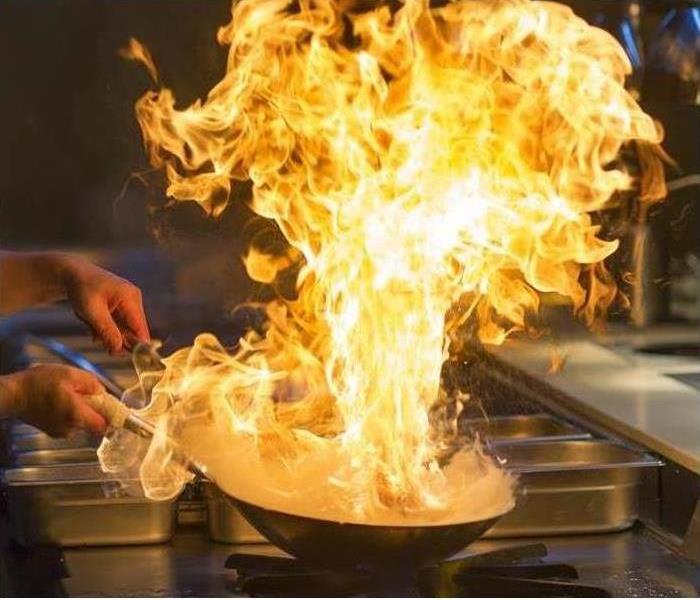 Use a fire extinguisher to limit the damage of a fire.
Use a fire extinguisher to limit the damage of a fire.
Few things can ruin a cozy evening at home faster than a kitchen fire. Whether you are preparing a meal for your family or cooking for friends, you must know how to effectively deal with flames in your kitchen. If you want to minimize fire damage in your Bountiful, UT, home, follow these four simple steps to use your fire extinguisher the right way.
4 Steps To Use Your Fire Extinguisher Correctly
- Remove the Pin
Your emergency extinguisher probably has a pin to prevent accidental sprays. This piece of plastic or metal sits inside the trigger. It also likely has a ring that makes removal simple and intuitive. Before you begin to extinguish a fire, you must remove the safety pin.
- Aim the Nozzle
Often, unaware homeowners point the nozzle of the extinguisher at the top of the flames. This is a mistake, as fires receive fuel from their foundations. Therefore, you must focus your spray on the base of the fire in your kitchen.
- Apply Controlled Pressure
Your fire extinguisher may dispense more suppression agent than you anticipate. As such, it is important not to panic. Instead, apply controlled pressure to the extinguisher’s nozzle. Begin slowly before gradually increasing pressure to successfully extinguish the blaze.
- Use a Sweeping Motion
To put out a fire of any size, you must concentrate on the base. As you probably know, fires tend to move around. By using a sweeping motion, you target all parts of the fire. Continue moving the extinguisher from side to side until the fire is gone.
Using a fire extinguisher to stop a fire in the kitchen is usually your best bet to limit damage. Still, extinguishers can be messy. If you have sustained damage or simply need a post-fire cleanup, working with a reputable restoration service in Bountiful, UT, is a good idea. Before you get to that point, however, you must be sure both you and your extinguisher are ready for action.
3 Rules To Limit Lint Fire Risks
7/12/2022 (Permalink)
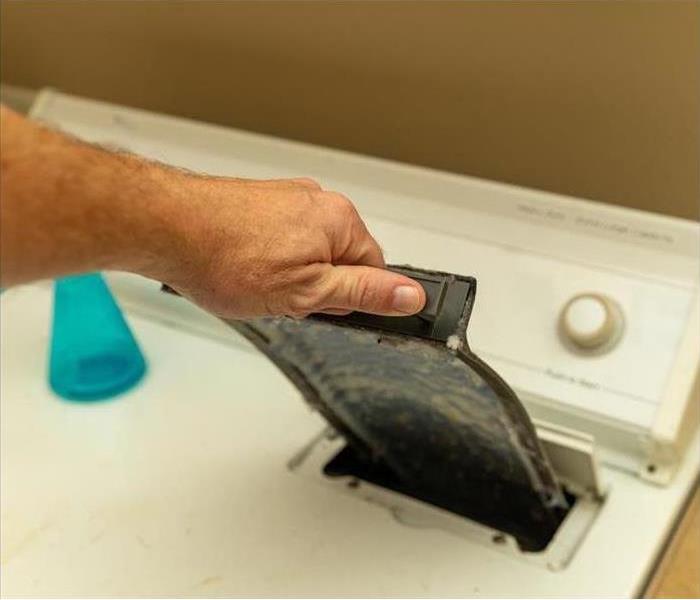 A lint fire is often avoidable.
A lint fire is often avoidable.
One of the leading causes of burned down homes is a lint fire. People underestimate the importance of routinely cleaning out their lint traps and dryer vents. If you want to avoid the risk of a dryer fire, then consider the advice of many fire restoration professionals in Bountiful, UT, and adhere to the following three rules.
3 Rules to Avoid the Risk of a Dryer Fire
- Clean Lint Filter After Every Load
How often do you check the lint trap in your dryer? All dryers have a lint trap, and it is typically installed near the front of the drum. If you are not in the habit of cleaning the trap out, you might want to start. The trap should be cleaned before and after every load, reducing the risk of a fire in the appliance.
- Clean Vent Pipe Every 3 Months
The dryer vent is often the leading cause of a lint fire. People neglect the vent because it is behind the appliance and can be cumbersome to get to. Thankfully, there are cleaning kits you can purchase, making the job somewhat more manageable. The vent pipe needs to be cleaned at least once every three months, but you might want to clean it more often, depending on the number of people living in the home.
- Contact a Professional for Annual Inspections
Like all appliances, the dryer needs maintenance to ensure it operates as expected. To keep your dryer running at peak performance, consider hiring a professional technician to inspect the mechanics at least once per year.
A lint fire can be devastating, and it is often avoidable. Checking the trap before and after every load ensures that there are no combustible materials remaining in the system. Cleaning out the vent pipe once every three months ensures that lint does not build up in the line. Most households use dryers, it is up to those homeowners to ensure the proper upkeep to minimize the risks of fire.
Finding the Right Fire Extinguisher for Your Home
6/22/2022 (Permalink)
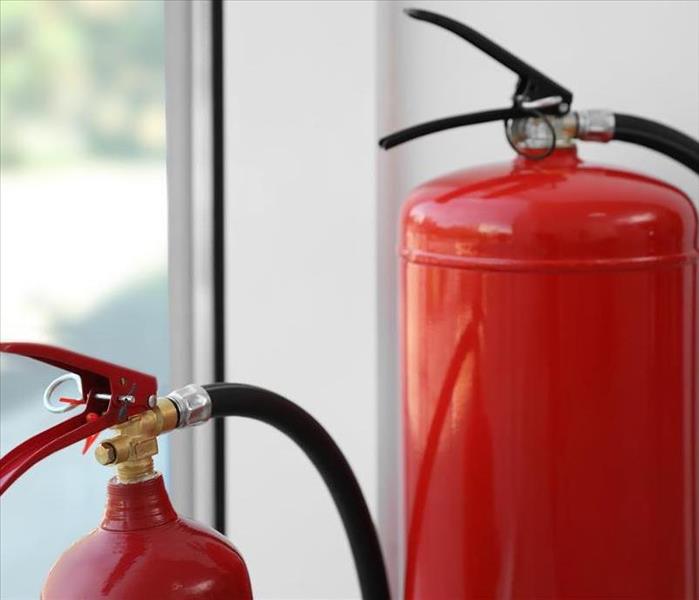 Follow our Tips and Find the Right Fire Extinguisher for you.
Follow our Tips and Find the Right Fire Extinguisher for you.
Responsible homeowners usually carry insurance to protect their homes and personal belongings from disasters such as theft and fire. While insurance can cover repairing and replacing losses, responsible homeowners also know that a plan for fire safety is also important.
A complete plan includes knowing how to evacuate the home and having smoke detectors and alarms to warn of a fire. Your fire safety plan is incomplete without a fire extinguisher on each floor. Here’s what you should know about buying extinguishers for your home in Bountiful, UT.
Choosing a Fire Extinguisher
While the National Fire Protection Association recommends an extinguisher for each floor, it’s important to understand the types of extinguishers that are out there first. Household extinguishers are categorized according to their rating, which indicates the types of fires they’re effective against:
- A - Effective on trash, wood, paper, and other normally combustible items
- B - Effective on grease and other flammable liquids
- C - Rated for electric fires
An extinguisher will indicate its rating. It will also include a number in front of the rating that indicates the degree of effectiveness. For example, a 4-A device will be more effective on combustible items than a 2-A device. Fire extinguishers that bear a C rating don’t include a number. This rating just indicates that the materials used to quench fires don’t conduct electricity.
When contemplating a home fire plan, consider the types of fires that are likely to occur in parts of your home. An extinguisher for use in a kitchen, for example, should include a B rating for grease fires.
Picking the Right Size
Fire extinguishers come in various sizes and weights. This should be another factor when choosing where to put them in your home. These are the standard sizes and recommended applications:
- 10-pound: Recommended for parts of the home where a fire can go unnoticed for a period of time, such as a garage or workshop
- 5-pound: Suggested for rooms like a kitchen where you need an extinguisher that’s easy to grab
- 2-pound: Recommended for cars
- Stovetop: Can be mounted on a range hood and is usually automatically triggered by flames
Recharging Your Extinguisher
When buying extinguishers, make note of whether it’s rechargeable or non-rechargeable. Non-rechargeable options can only be used once. This is why you can’t even test a non-rechargeable extinguisher, which gradually loses its charge once used. Rechargeable extinguishers can be serviced by an authorized fire equipment dealer. Even if you only used a small amount of the contents, your fire extinguisher will need to be serviced and refilled. Ideally, the extinguishers in your home should be rechargeable.
No fire preparedness plan is complete without a fire prevention system that includes fire extinguishers. While basic coverage involves at least one extinguisher per floor, you should consider the rating and the size of a fire based on its location in your home. Strategic placement of these fire prevention devices can reduce the damage you experience at your home in Bountiful, UT.
Less fire damage minimizes the time and cost required for a residential restoration services company to return your home to preloss conditions.
How To Make and Practice Your Home Fire Escape Plan
3/14/2022 (Permalink)
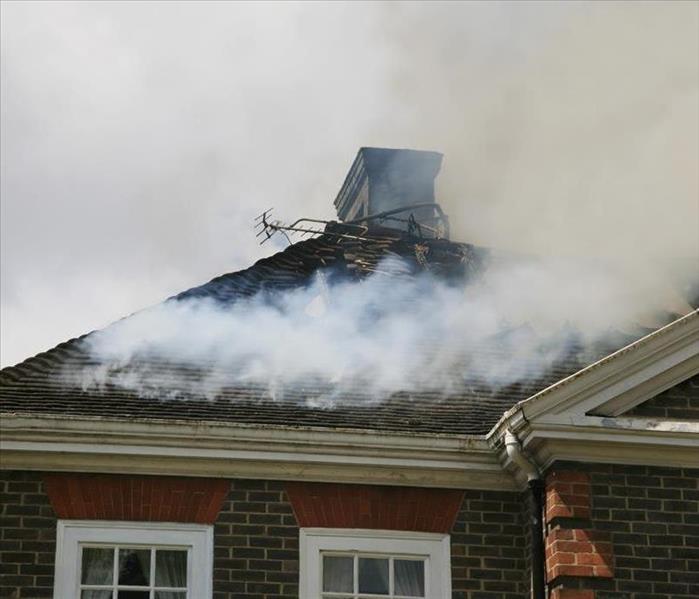 Make and Practice Your own Home Fire Escape Plan, and Avoid Fire Damage in your Bountiful, UT House.
Make and Practice Your own Home Fire Escape Plan, and Avoid Fire Damage in your Bountiful, UT House.
If a fire ever breaks out in your Bountiful, UT, home, you do not have as much time to flee as you think you do. The National Fire Protection Association recently found that one-third of American households thought a fire does not become life-threatening until six minutes after it starts. However, a fire can quickly spread to dangerous levels in even less time. That is why creating a fire escape plan is so important.
Unfortunately, only about one-third of American households have actually made and practiced an escape strategy. If you are one of the homeowners who has not properly prepared your family for a fire, follow the below steps.
How To Create a Fire Preparation Plan
1. Discuss All Possible Entrances and Exits
Start by bringing everyone in your family together. Then go throughout the house and note two escape routes out of each room. Make sure that each window and door can be easily accessed and opened.
2. Choose a Meeting Place
Next, pick a meeting place where everyone can gather after escaping the fire. The location you choose should be a safe distance away from the home.
3. Memorize Important Numbers
Once the plan is in place, have everyone in your home memorize the phone number for your local fire department. This way, anyone can call for help from a cell or a neighbor's landline. You may want to store and remember the contact information for your local fire restoration company, as well.
4. Check and Install Smoke Alarms
While you are discussing your fire escape plan, you should also check to see that your smoke detectors are functioning properly. Put a smoke alarm on each level of the home, inside each bedroom and outside each sleeping location. Look for detectors that are interconnected. If one of those alarms goes off, the other ones in the home will beep, as well.
How To Practice Your Escape Plan
Just creating a fire preparation plan is not sufficient. You also need to practice the strategy at least twice per year. This way, you can discover and fix any weaknesses in the plan.
Your children need to understand how to respond if the smoke alarm goes off while they are sleeping. You should thus regularly hold these home fire drills at night. You do not want to frighten the kids, however. You can thus warn them ahead of time that the drill will occur.
Another benefit of practicing the escape plan at night is it allows you to see which members of your family sleep through the smoke alarm. If anyone in your household stays asleep throughout the drill, give someone in your home the job of waking up the sleeping person during a real fire.
In some situations, the smoke or fire may be too intense for you to escape. Plan for this scenario, as well. Each person should practice sealing himself in a room and covering door cracks with towels or tape.
It is easy to panic if you see flames or smoke in your house. Yet if you make and practice a fire escape plan ahead of time, you and your loved ones will know what to do during this emergency.
Tips for Salvaging Sentimental Items After Fire Damage
2/23/2022 (Permalink)
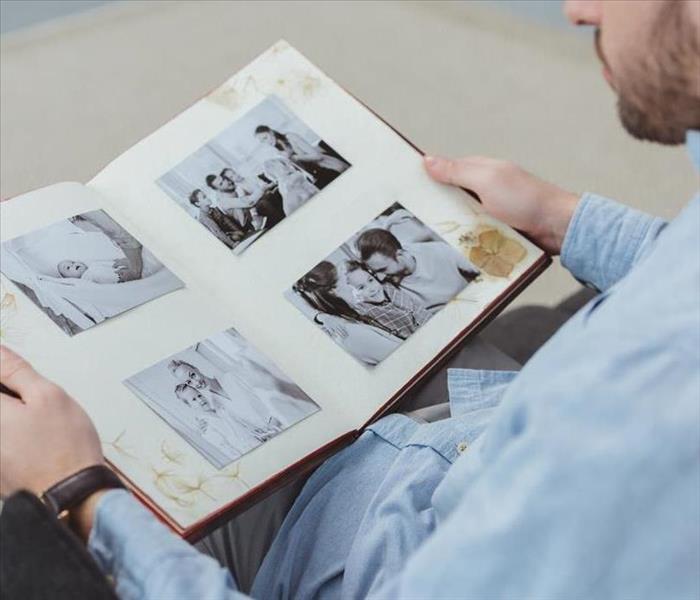 Follow These Tips for Salvaging Sentimental Items After Fire Damage in your Bountiful, UT property.
Follow These Tips for Salvaging Sentimental Items After Fire Damage in your Bountiful, UT property.
House fires can be particularly difficult to recover from because, in addition to the fire damage, there is often damage from smoke, ash, chemicals and water. These tips can help you save some of your irreplaceable sentimental items.
How To Salvage Sentimental Items After Fire or Water Damage
Your priorities when attempting to salvage items after a fire are to stay safe and to get the insurance process started:
- Call your insurance company to file a claim as soon as you can
- Check for structural damage before entering your home
- Do not attempt to salvage items from an unsafe building
- Wear protective gloves, eyewear and face masks
- Do not touch or breath in hazardous materials
- Take pictures of damaged items for your insurance claim
Tips for Handling Damaged Items
Items that have been damaged by flames, smoke, ash or water may be fragile. Improper handling may damage these items further. Handle items as little as possible. Fine particles of soot may be ground into the objects without you realizing it. Ash and soot are abrasive materials that can scratch fragile items.
Pick up items carefully and avoid touching the most damaged areas. Wear latex gloves to prevent the oils in your skin from permanently binding soot residue to absorbent surfaces. Do not apply pressure to surfaces that are blistered or lifting. Store items in supportive plastic containers or boxes until they are ready to be cleaned. Clean objects as soon as possible. The longer soot remains on objects, the more difficult it is to remove.
Cleaning Tips
Do not use water or cleaning solutions to clean items with fire damage. The water will force ash and soot further into the surface of the item. Vacuum ash and soot off your item as soon as you can. However, if a fire hose was used to put out your fire, avoid vacuuming any items that are still damp. Use a vacuum with a HEPA filter on its lowest setting.
Do not brush items or touch them with the vacuum nozzle. Vacuum the surfaces of folded items before unfolding them. If the item is not fragile, you may be able to use a soot sponge to remove additional soot.
Additional Tips
If you have shelved books that you want to save, they may be burnt on the outside, but undamaged on the inside. Vacuum the edges before you open the books to avoid spreading soot onto the pages. If you find a photo album that is stuck together, do not try to pry it open. Instead, contact a restoration company in Bountiful, UT, to find out if they can restore the item for you.
Heat may cause metal, ceramic and glass items to become brittle. Be careful when handling these items. Fabric items may appear to be intact but may fall apart if not handled gently. Before you give up on items that seem too damaged to restore, consult with a restoration company.
Not every family heirloom that has fire damage is restorable. However, it may surprise you how many of your sentimental items can be saved with careful handling and appropriate cleaning techniques.
6 Ways To Prevent a Dryer Fire
1/3/2022 (Permalink)
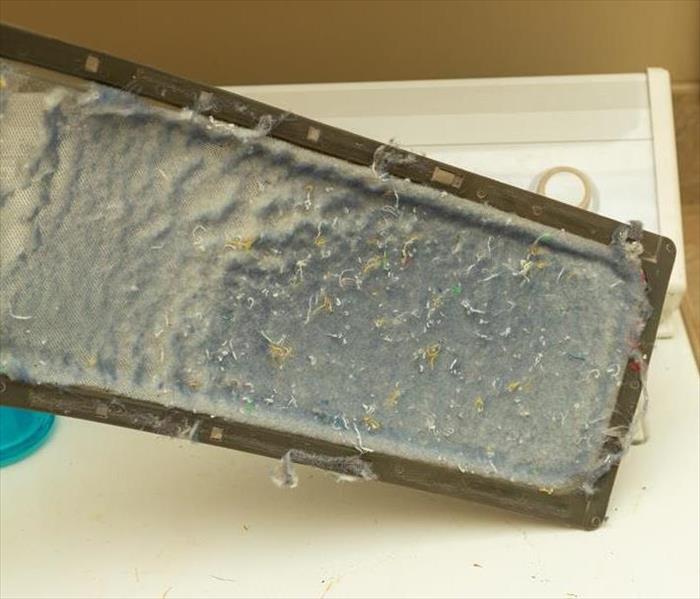 Consider these suggestions and if any problem of this type occurs, do not hesitate to contact us.
Consider these suggestions and if any problem of this type occurs, do not hesitate to contact us.
Most homeowners also own a clothes dryer and often use it several times a week. If not operated and maintained correctly, these appliances can be a significant fire hazard. In fact, they're one of the United States' leading causes of house fires. It's imperative to learn how to prevent a dryer or lint fire at your Bountiful, Utah, home.
Important Steps to avoid Fire Hazard
1. Have Your Dryer Professionally Installed
You can practice safety right from the beginning by getting a professional to install your dryer. A certified electrician is familiar with and experienced in these appliances and safely installs them according to the manufacturer's requirements. It can be dangerous for someone inexperienced to install a major appliance that uses electricity or gas.
2. Keep Watch on Your Running Dryer
Always be close by and aware when your dryer is running. Even the best-maintained dryer can cause a dryer fire, so you should never leave a dryer unattended by leaving your home or leaving it running after you go to bed.
3. Keep Your Laundry Area Clean
Whether you have a small laundry area or a laundry room, many of the things you typically find around washers and dryers are flammable. Keep the area around your dryer clear of clothes and other fabrics (e.g., curtains on a nearby window), flammable washing products, combustible materials (e.g., cigarette lighters), dust, and lint. Keeping your dryer and its surroundings free of lint can significantly reduce the risk of a lint fire.
4. Don't Overload the Dryer
Avoid overloading your dryer. While it may seem like you can get your laundry finished faster by doing one drying load rather than two, it can potentially cause a problem. When a dryer is packed with wet items, it limits the amount of room for air circulation and puts a lot of unnecessary stress on the appliance's components (e.g., pulleys, bearings, and belts). When your dryer has to work harder, it can result in an increase in friction and heat.
5. Keep the Lint Trap Clear
One of the best ways to prevent a dryer fire is by cleaning the lint filter after every load of laundry and checking it before every load. Lint is highly flammable. Research has found that over a third of dryer fires begin due to a filter full of lint. The dryer's heating element can reach 550 degrees during a cycle. This, combined with lint, can start a fire that spreads quickly and is difficult to put out. This devastation will most likely require the assistance of fire damage restoration experts. A clear lint trap can also make for more efficient drying.
6. Routinely Clean the Dryer's Exhaust Vent and Hose
Lint can accumulate at different dryer areas; the exhaust vent is one of those areas. Developing a blockage in the hoses can put you at much more risk for a fire because it restricts airflow. You can disconnect the vent from the hose to see if lint has accumulated. If you find lint, you can use a snake to clear it.
It pays to be proactive concerning your family's protection. Learn how to safely operate and maintain your dryer to avoid a lint fire.
Protecting Your Pets in a Fire Emergency
10/13/2021 (Permalink)
 It is crucial to maintain pets safe in a fire emergency in your Bountiful, UT home.
It is crucial to maintain pets safe in a fire emergency in your Bountiful, UT home.
There are countless articles on the web about keeping your family safe during a fire emergency, but few address what family entails. Family is more than moms and dads, brothers and sisters. The family also includes all the furry, feathery, and scaly friends that people call pets.
Pets are integral components of nearly every family unit, and as such, it is crucial that you make a plan to keep them safe. The local fire department or a fire disaster company in Bountiful, UT, can help you come up with a plan to keep your animals safe.
Fire Emergency Preparation for Furry Friends
Pet preparation is all about knowing the potential threats and hazards a fire presents and designing escapes and notifications accordingly. Your animals will not understand fire escape routes, and they cannot make rational decisions to get to safety in a real emergency.
While some animals can be trained to obey commands in some situations, it is best to design your home and your pets' routine around basic fire safety protocols. There are at least three ways to keep your pets safe when a fire occurs.
1. Keep Pets Near Entrances
The number one rule for pet safety involving house fires is always to keep your pets near entrances when you are away from home. Suppose you crate your dog while at work; put the crate near the front or back door. If your cat has a favorite cat tree, put it in the front room and close all bedroom doors, keeping its interest in the front of the house. The same goes with birds or other caged animals; keep them safe by placing their habitats near an entrance.
2. Keep Leashes Near Doors
A firefighter cannot be expected to keep a panicked animal under control while removing them from your house, especially to carry them from the premises without any guide or assistance. When you own dogs or cats, place leashes near the entrances of the home. Having leashes or even a kennel near the house entrance will make it easier for a firefighter to remove your pet safely, limiting the risk of injury to the animal or themselves.
3. Affix Pet Alert Stickers on Windows
It has become commonplace to have stickers indicating how many pets or family members you have in your home in recent years. If you feel comfortable doing so, it is helpful to emergency services if you affix an animal alert sticker on your windows.
Pet alert stickers tell firefighters the number of pets you have and what kind they are. Having all the information they need about the number of people and pets helps firefighters ensure they get everyone to safety. It also means that they do not prematurely call off a search and rescue.
A fire emergency is a time of panic and confusion. Do not wait until a disaster strikes to formulate a plan for the safety and rescue of your pets. When there is no chaos, take the time to make appropriate, straightforward plans, including kennel and cage placement and notification stickers.
The 6 Steps of Fire Cleanup
8/2/2021 (Permalink)
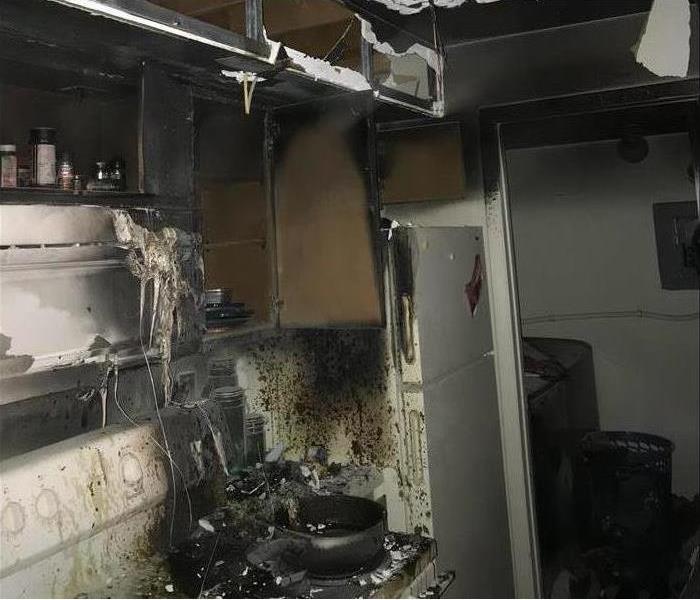 Hire a professional team to clean after fire damage in your Bountiful, UT, home.
Hire a professional team to clean after fire damage in your Bountiful, UT, home.
Home fires can be devastating, but you don’t have to face the cleanup process alone. Hiring fire damage professional in Bountiful, UT, can help return your home to its pre-fire state quickly and efficiently. In addition to restoring the areas most directly affected by the fire, the professionals can also handle smoke damage and soot damage throughout your house. Here is what to expect when you bring in a professional service to restore your home after a fire.
1. Assessment
Before anything happens, experienced fire restoration specialists need to inspect your home. This allows them to determine the best way to proceed. Once they’ve assessed the situation, they should share their cleanup plan with you.
2. Boarding and Tarping
Fire can burn holes in your roof and walls, blow out windows and compromise the structural integrity of your home. To protect your home from further damage by the elements, openings can be covered with waterproof tarps. Boarding over doors and windows protects your home from intruders and prevents entry into unsafe areas.
3. Water Removal
If the fire was put out by the fire department, chances are good your home’s interior has been doused with water. The water is removed using powerful wet vacs or submersible pumps in extreme cases. The affected areas are dried completely with industrial-grade air movers and dehumidifiers. This prevents further water damage and inhibits the growth of mold.
4. Soot Removal
Smoke damage often means a layer of oily, black soot staining walls, furniture, and carpets. This can be removed using powerful, specialized vacuums and other techniques.
5. Cleaning and Deodorizing
To eliminate the odor left behind by smoke, surfaces need to be cleaned and deodorized. Smoke cleaning is even carried out on the air inside your home using air scrubbers and foggers.
6. Restoration
While smoke damage can usually be dealt with by cleaning, if floors, walls, or cabinets have been destroyed by the fire, they need to be repaired or replaced. A comprehensive fire damage service in Bountiful, UT, should be able to handle everything from the assessment to the restoration.
For more information, please visit us at SERVPRObountiful.com.
Davis County Smoke and Soot Cleanup
7/29/2021 (Permalink)
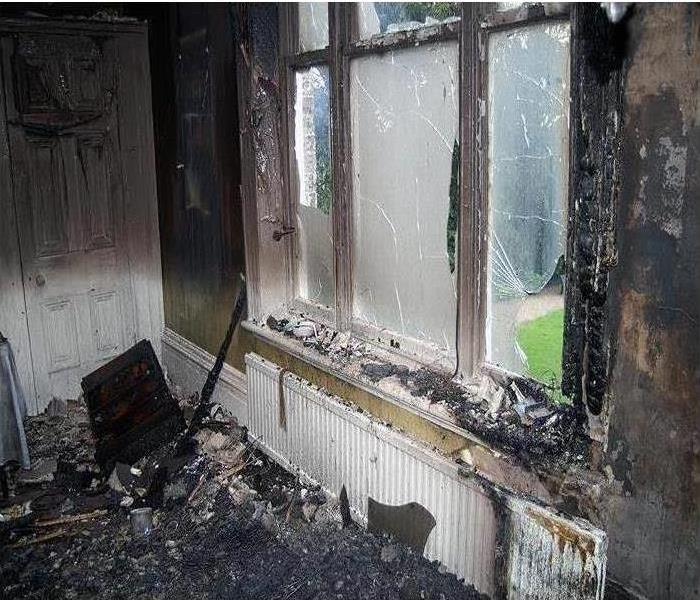 Smoke and Fire Damaged Property in Bountiful Utah
Smoke and Fire Damaged Property in Bountiful Utah
Smoke and soot are very invasive and can penetrate various cavities within your home, causing hidden damage and odor. Our smoke damage expertise and experience allow us to inspect and accurately assess the extent of the damage to develop a comprehensive plan of action.
Smoke and soot facts:
- Hot smoke migrates to cooler areas and upper levels of a structure.
- Smoke flows around plumbing systems, seeping through the holes used by pipes to go from floor to floor.
- The type of smoke may greatly affect the restoration process.
Different Types of Smoke
There are two different types of smoke–wet and dry. As a result, there are different types of soot residue after a fire. Before restoration begins, SERVPRO of Bountiful, UT, will test the soot to determine which type of smoke damage occurred. The cleaning procedures will then be based on the information identified during pretesting. Here is some additional information:
Wet Smoke – Plastic and Rubber
- Low heat, smoldering, pungent odor, sticky, smeary. Smoke webs are more difficult to clean.
Dry Smoke – Paper and Wood
- Fast burning, high temperatures, heat rises therefore smoke rises.
Protein Fire Residue – Produced by evaporation of material rather than from a fire
- Virtually invisible, discolors paints and varnishes, extreme pungent odor.
Our Fire Damage Restoration Services
Since each smoke and fire damage situation is a little different, each one requires a unique solution tailored for the specific conditions. We have the equipment, expertise, and experience to restore your fire and smoke damage. We will also treat your family with empathy and respect and your property with care.
Have Questions about Fire, Smoke, or Soot Damage?
Call Us Today – 801-298-4272
How To Keep My Pets Safe During a Fire Emergency
5/25/2021 (Permalink)
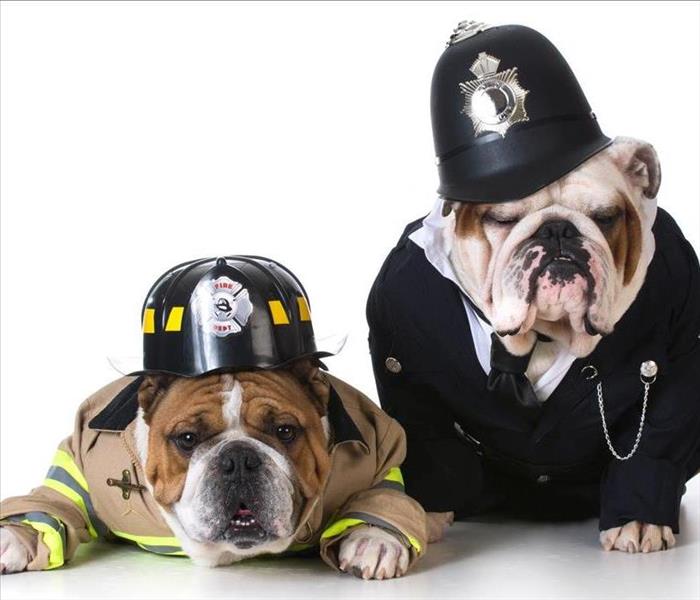 Keep your pets safe during a fire emergency.
Keep your pets safe during a fire emergency.
During a fire emergency, keeping your family safe is important. That family includes your pets. There are a few simple ways that you can do this before, during and after a fire.
Simple Ways To Keep Your Pets Safe
Pet Fire Prevention
Furry friends cause almost 1,000 fires per year. You can help prevent this from happening by:
- Using flameless candles
- Keeping stove knobs out of reach
- Securing young or unruly pets when not supervised
- Douse open flames
These precautions help keep your family safe from accidental fires.
Pets Before a Fire
A bit of pet preparation is also helpful. Although fires come without warning, you can make sure that you are prepared. Make sure you put "pet inside" stickers up to alert workers to the presence of your pet. You should always keep a leash by your door in case a fireman or other rescue worker needs to get your pet out. These two simple acts can save your pet's life.
Pets During a Fire
You probably already know what to do during a fire emergency. You may have even practiced fire drills. It is important to include your pets when practicing. This way, you will know what each family member needs to do when there is a fire.
Pack a "go bag" before a fire. This is a bag that contains all of the first aid, pet and other supplies you need as well as the numbers for your insurance company and a fire cleanup company in Bountiful, UT.
Pets After a Fire
Pet safety is as important after a fire as during one. Make sure that you are staying in a pet-friendly place while you wait for the fire department and cleanup company to clear your house. Since you are staying away from home, make sure your pet's vaccinations and tags are up-to-date as well.
You should know how to keep everyone safe in the event of a fire emergency. These tips can help you do this.






 24/7 Emergency Service
24/7 Emergency Service










